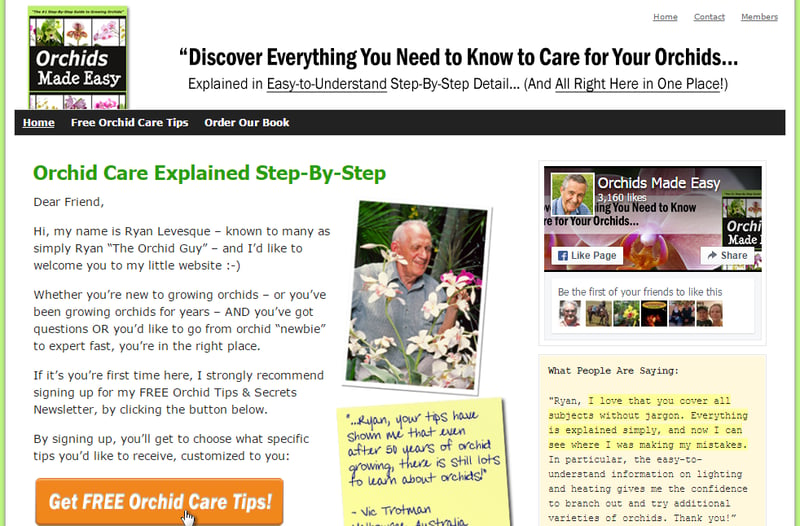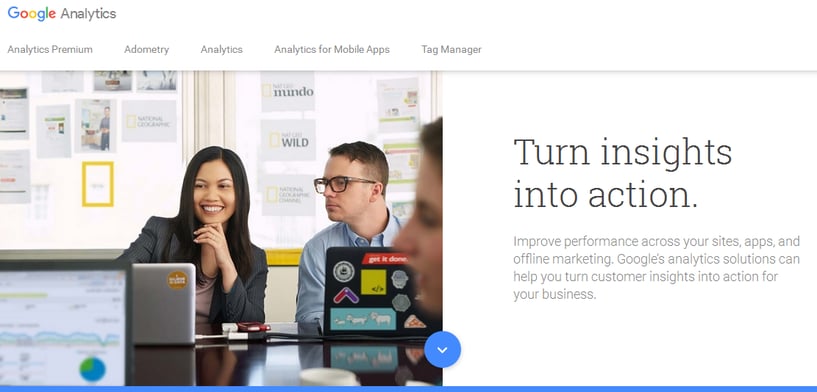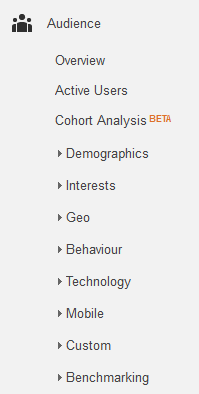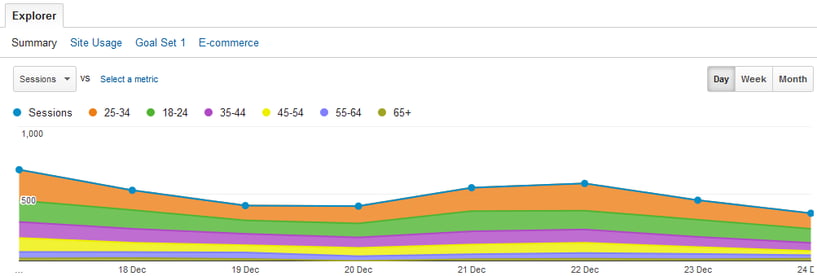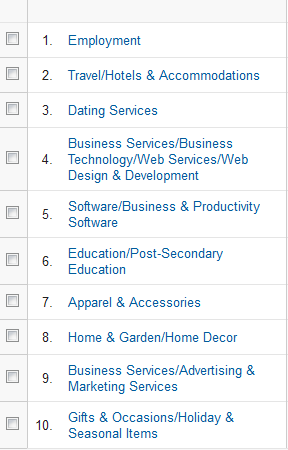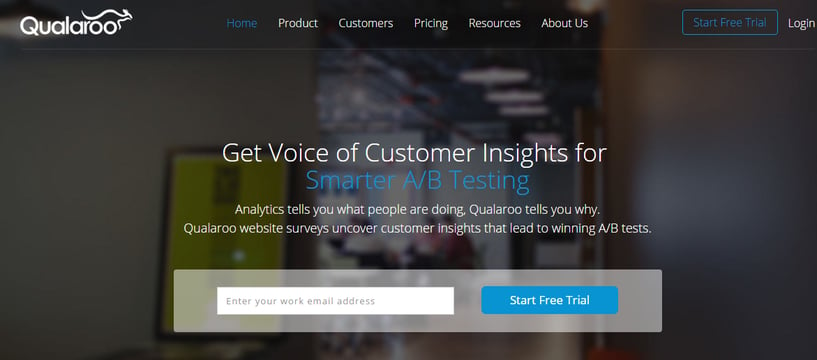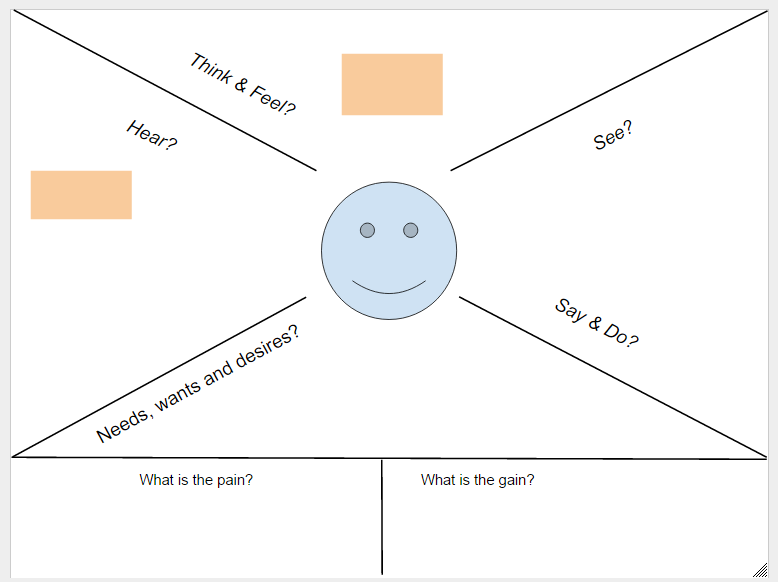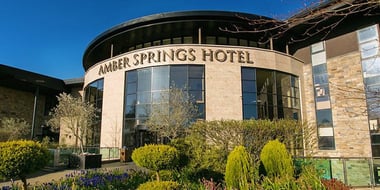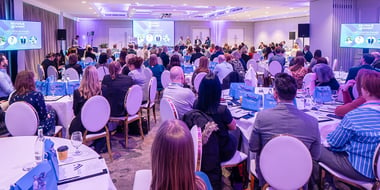Keeping your profit margins strong and growing can be a challenge. Understand your hotel guests to create a strong book direct strategy.
When you understand your hotel guests, you’re able to create a book direct strategy with a high conversion rate. The benefits of a strong book direct strategy are huge: you save money by not paying OTA commission rates, you strengthen your brand in your guests’ minds, and you get the opportunity to create a more personal connection with your guests.
The best way to understand your audience and drive those direct bookings is by creating a customer persona.
If you genuinely know who your ideal customer is, it’s pretty easy to market to them. Most hotels don’t create a customer persona, and if they do it’s based on guesswork, not on solid research.
Hotels have a number of wildcards to navigate when it comes to their bottom line. From operating costs to out-of-control OTA strategies, there are a number of places where your hotel might be bleeding money. Your book direct strategy shouldn’t be part of the problem.
To help you out, today we’re going to tell you exactly how to perform all the research required to create customer personas. These personas will help you understand your hotel guests and boost your bottom line.
Analyse the Data You Already Have
If, like most hotels and restaurants, you have a feedback form that you give to all customers to answer, you should have plenty of data to get started. Take notes from these feedback forms to see what your hotel guests like and dislike about your hotel. If you have demographic details like age and gender, make note of these too.
Out of all these customers, pay special attention to the ones that leave detailed comments.
Ryan Levesque, an optimization and sales expert, discovered that the most detailed answers are the most important ones the hard way.
After launching his orchid care website, Ryan was brainstorming ways to monetize his traffic. So he conducted a survey to find out what his audience’s most pressing orchid related problems were. Most of the participants stated they wanted to learn how to water their orchids properly.
Hence, Ryan created a guide that thought people how to water their orchids better. But very few people purchased it.
This is when he studied the survey results with a different perspective. He found that among all the survey participants, there were a few passionate people who left more detailed answers. He studied their answers carefully, created a product for this set of audience, and it sold really well.
This is why it is important to place focus on the answers provided by your most enthusiastic customers instead of everybody else. These are the people will visit your hotel again and again – when you want to understand your hotel guests, you start with the most loyal guests.
After you have gone through the feedback forms, it’s time to get analytical. Most analytics tools gather data like the gender, age and location of the people visiting your website.
I am going to show you how to find this information using Google Analytics. Log in to your account now and visit your hotel’s analytics page.
In your hotel’s Google Analytics page, you will find a menu located towards the left side of the screen. Click on the Audience option.
After it expands, you will be able to zero in on different facts about your audience.
For example, if you click on ‘Demographics’ and then on ‘Age’, you can check out which age groups of people visit your website. If you have set goals, you can also check which age-group of people convert the most into hotel guests.
You can even compare age with a secondary dimension to view things like source of traffic, landing page, and so many other things.
In a similar manner, you can inspect your website visitors’ gender, language, location and interests. Compare these things with goals and other secondary dimensions to understand your hotel guests’ web behaviour.
If you have an expert in google Analytics on your staff, have them take a look. If not, there are great guides out there, or you can get in touch with our expert, Google-certified team.
Make a note of all these results so that you can refer to them quickly. An Excel file is a great place to keep your notes.
This research will lead to some key insights about your audience, but it isn’t sufficient. You should use your data as the foundation for your customer personas, but you still need those real-world insights. We’ll show you how to get those next.
Ask Your Audience
You might be thinking ‘Ask your audience? But haven’t I already done that with the feedback cards? What will I ask them now?’
Yes, you already have done it. However, the information you have gathered through feedback is not sufficient. Those answers tell you about the experience the hotel guests had at the hotel. They are most useful for improving your hotel, not necessarily your marketing efforts.
For finding answers that are meant to help you with your marketing, you will need to prepare a new set of questions.
Think about a list of the basic questions you would like to ask. Don’t shy away from asking questions like age and income. Here’s a list of questions you can ask. Along with these regular questions, you should create some unique ones based on the data you already collected from your analytics and feedback forms.
Key Tip: Throughout the process of getting feedback, keep this in mind. You’re asking your guests to do you a favour. They aren’t obligated to take a survey or participate in an interview, and some may feel imposed upon. Find an unobtrusive way to request interviews, and if you’re not getting the volume you want, consider offering a reward in the form of a spa or restaurant voucher, or an entry into a contest.
Start With In Person Interviews
The first thing to do is interview your most engaged potential hotel guests. It can be more difficult to get in person interviews, but it can be key: you want more than verbal answers. Seeing body language and being able to tell what they’re hesitant or unhappy about is important.
Follow With a Survey
The information you gather through interviews will not suffice. Surveys which will help you obtain the answers of dozens of people within a few days. They might not be as effective as in-person interviews because you can’t ask follow-up questions or look at a guest’s body language, but they are more than worthwhile
If you were tried to interview every hotel in person, it would take up months of you and your staff’s time. A survey is low-cost, low-impact, and is easy for both your guest and you.
Tools to Create Effective Surveys:
You can use the same list of questions you used in your interviews to create your surveys. You can actually create different types of surveys for different audiences.
A few of the best tools for creating these surveys are Survey Monkey, Typeform, and Qualaroo.
Survey Monkey is perfect for creating regular surveys where you set up a list of questions and then send traffic to it. You can send this traffic yourself via your marketing channels or use Survey Monkey. They already have a huge database of the audience you are looking for who are eager to answer your questions. It can help you attract the exact number of participants you want.
Typeform is similar to SurveyMonkey – however, it offers a more streamlined and aesthetically pleasing design, and offers different options than SurveyMonkey does. Take a look at both to find out what question formats and layouts you prefer.
Qualaroo is very different. It provides a set of widgets you can use to display the survey directly on your hotel website. Don’t worry about bothering casual visitors: you can set Qualaroo to display the form only when the website visitors exhibit a certain type of behaviour, like spending a certain amount of time on site or visiting your booking engine. This form will usually ask one question and follow it up with more depending on the answers.
With this tool, you can gradually understand who your website visitors are and what they want. For best results, avoid placing them on landing pages as they can reduce conversion rates by distracting visitors.
After your questions have been answered, it’s time to move on to the final information-gathering step: empathy maps.
Creating an Empathy Map
When you empathize with someone, you feel what they feel. You share their joy, their frustration or their grief because you have been In a similar situation and you know where they’re coming from.
Top marketers take steps to empathize with their audience by creating empathy maps. When you understand your hotel guests emotionally, you can put yourself in a position to fix their problems, increase their happiness or alleviate any distress they might be feeling..
A study analyzing the profitability of 1,400 marketing campaigns found that campaigns that tapped into the audience’s emotions perform 2 times better than strictly informational ones. Another study found that emotional ads outsell informational ads by 19%.
To create an empathy map, you can get started with whiteboard, a marker and sticky notes. Wendy Castleman and Suzanne Pellican clearly explain how to create an empathy map and empathize with the audience in the below video.
Empathy Map from Design for Delight on Vimeo.
Essentially, you’re trying to get from your customers’ obvious feedback and behaviour – what they say and do – to the underlying beliefs and problems that motivate that. That’s the think and feel part of the board.
Here’s an example:
When a guest says they would “never stay at a hotel that charges for wifi,” what’s going on there? It might be because they think that wifi is such an integrated part of life today. Because it’s offered for free at so many locations, charging for it might come off as cheap instead of as a way to control costs.
This feeling about wifi may mean they have similar beliefs about other technological amenities that weren’t specifically covered in the interview, like automated check-in or an app to make room requests.
Use your analysis to figure out how your guest feels. The biggest benefit of using this method with the board and the post-it notes is that it makes it easy for the entire team to contribute.
As you analyse each answer and figure out all the emotions, make a note of them on another piece of paper or board. Later, verify these feelings to confirm if what you have figured out is right.
For those of you who want to do this on their laptops, you can use a Google Docs empathy map located on this page.
Once you finish mapping your potential hotel guests’ emotions, you should be able to understand what they feel when they stay at your hotel, what their day is like, what sort of things they hear about your hotel from others, and so on.
If possible, try to get staff from every department in the hotel involved: they’ll all have unique insights to contribute.
Creating Your Customer Personas
At last! It’s finally time to create your customer persona. You have all the information required. Using the data, you can give your customer a face, a body, a brain and a heart.
This persona should include details like:
- Name
- Professional and personal background
- Demographics
- Goals
- Challenges
- Pains
- Skills
- Interests
- Relationship with your hotel
Write them down in as much detail as you can.
For example, an excerpt from a persona for Andy could read something like this:
‘Andy Smith is a General Manager who is in his early-40s. He has a wife and two kids. He’s unhappy with the attention his job requires because he wishes he could spend more time with his wife and kids. The only thing that makes him really happy about his job is how well it pays.
He’s a bit of a spendthrift, but he likes to splurge on a lavish holiday at least once a year. It ensures that he gets to spend some quality time with his wife and kids. He’s interested in a luxury hotel that has good Wi-Fi and is located close to the city centre so that he can do some work while vacationing.’
This is just a brief customer persona to provide you a basic understanding. The one you create should be a complete profile about your customer. Don’t forget details that could add to the persona’s character.
The above persona was created by the Buyer Persona Institute.
Once you have a detailed persona like this in place, you’ll fully understand your hotel guests. Marketing to them in a targeted way will be so much simpler.
Remember: you’ll probably need to create more than one persona, since you won’t be targeting just one type of customer. Your audience might consist of business travellers, young couples and students depending upon the type of hotel you run. You will learn about your different customer personas as you conduct the research.
After you have your personas built, you can use them to create sets of marketing campaigns to target different segments. You could also find characteristics that all these personas share and create one campaign for them all. All these people might be vastly different from each other, but you’ll probably be able to find some key resemblances. After all, they’re all interested in your hotel!
Give your personas a face and a name – the entire point of a customer persona is to narrow your focus to a specific, hypothetical person. A name is important part of that for us, psychologically speaking. It will make it easy for your sales and marketing team to picture who they are communicating with.
To sum it up:
To understand your hotel guests, you must:
- Analyse the data you already have
- Interact with your audience
- Draw an empathy map to understand their feelings
- Create the customer persona
This will give you a full understanding of your audience.
When you have sets of marketing campaigns up and running for your different customer segments, your targeted, well-designed and compelling campaigns will give your direct bookings a serious boost.
What other steps would you take to understand your hotel guests and boost your direct bookings? Please leave your comments below.

